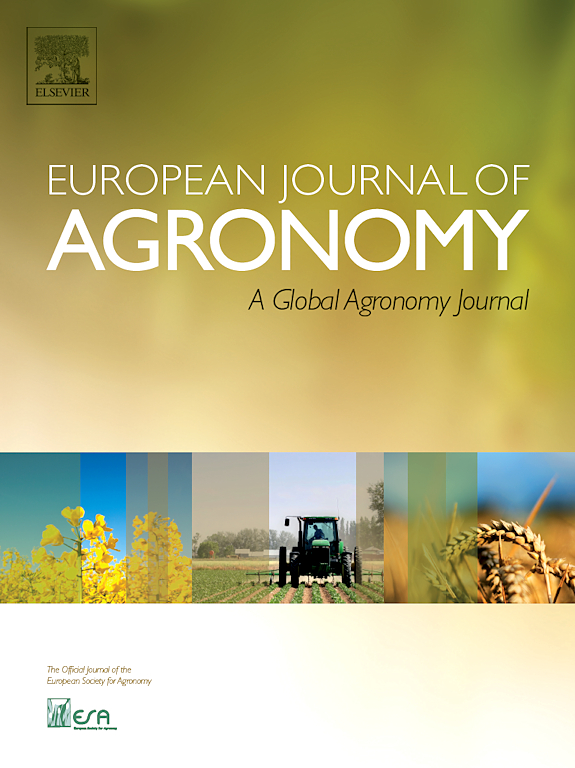Ver ítem
- xmlui.general.dspace_homeCentros Regionales y EEAsCentro Regional Buenos Aires SurEEA BalcarceArtículos científicosxmlui.ArtifactBrowser.ItemViewer.trail
- Inicio
- Centros Regionales y EEAs
- Centro Regional Buenos Aires Sur
- EEA Balcarce
- Artículos científicos
- Ver ítem
Nitrogen diagnosis for double-cropped maize
Resumen
Double cropping has been proposed as a strategy to promote ecological intensification. In temperate regions, maize (Zea mays L.) could be a viable option for double cropping. However, there is a lack of information regarding how maize adapts to the environmental and edaphic conditions that late sowing entails. Since nitrogen (N) is considered the most limiting yield factor for maize, the aim of this study was to assess double-cropped maize response to N
[ver mas...]
Double cropping has been proposed as a strategy to promote ecological intensification. In temperate regions, maize (Zea mays L.) could be a viable option for double cropping. However, there is a lack of information regarding how maize adapts to the environmental and edaphic conditions that late sowing entails. Since nitrogen (N) is considered the most limiting yield factor for maize, the aim of this study was to assess double-cropped maize response to N fertilization in Mollisols from humid temperate regions. Eleven field experiments were conducted in the Southeastern Argentinean Pampas from 2018 to 2021. Five fixed N rates (0, 30, 60, 90, and 120 kg N ha-1) were evaluated at each site. Relative chlorophyll meter reading (CMR) at silking, grain yield, N content in grains, and grain number and weight responded to N fertilization in most sites. In responsive sites, the evaluated parameters were affected up to a 60 kg N ha-1 rate. Relative CMR accurately predicted variations in maize grain yield (R2 = 0.58). Contrarily, soil parameters (initial mineral N availability, ammonium-N released during a short anaerobic incubation, soil organic matter) were not associated to maize grain yield nor to its components. However, the N availability was associated with relative grain yield through a quadratic model, where initial N availability + Fertilizer N explained 67% of relative grain yield variability. Our results indicate that, although double-cropped maize productive potential is lower than obtained at early sowing dates, it responds to N fertilization, and its evaluation through the CMR contributes to a correct diagnosis to maximize yields.
[Cerrar]

Autor
Fuente
European Journal of Agronomy 140 : 126600 (October 2022)
Fecha
2022-10
Editorial
Elsevier
ISSN
1161-0301
Formato
pdf
Tipo de documento
artículo
Palabras Claves
Derechos de acceso
Restringido
 Excepto donde se diga explicitamente, este item se publica bajo la siguiente descripción: Creative Commons Attribution-NonCommercial-ShareAlike 2.5 Unported (CC BY-NC-SA 2.5)
Excepto donde se diga explicitamente, este item se publica bajo la siguiente descripción: Creative Commons Attribution-NonCommercial-ShareAlike 2.5 Unported (CC BY-NC-SA 2.5)

